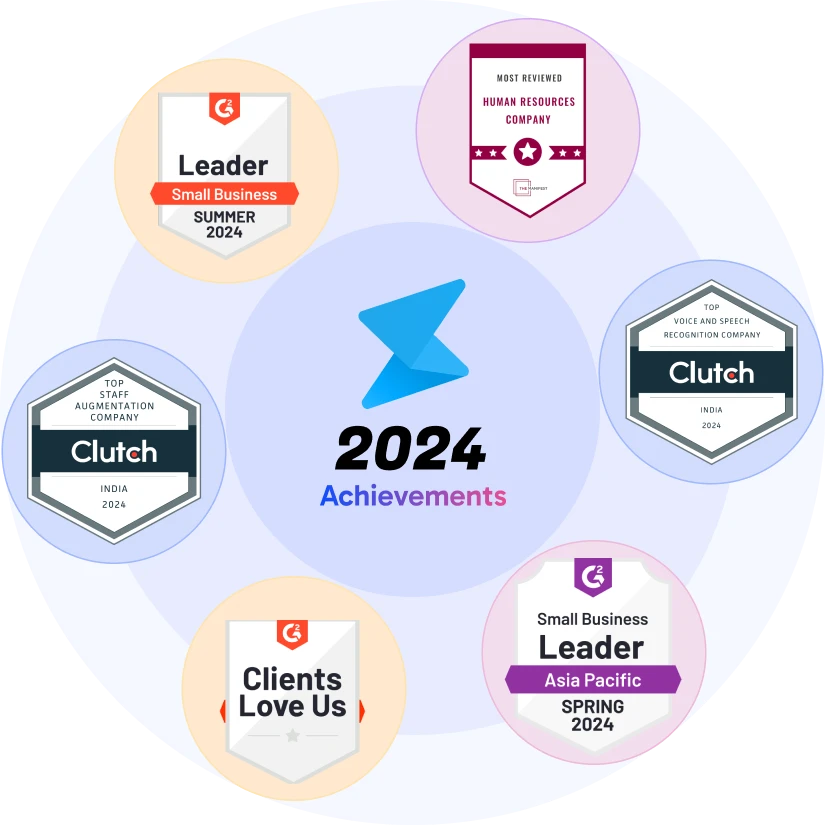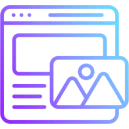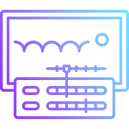
Hire UI/UX Designers
Top UI/UX designers at Supersourcing can help keep your audience engaged on your platform, improving retention and conversion. With expertise in creating responsive designs and user-friendly interfaces, hire UI UX designers, who specializes in making your product visually compelling.

Top UI/UX Designers, Trusted by the Best in Business







Meet the Best UI UX Designers for Hire
Create top-tier interface design and user experience with our skilled UI UX designers. Specializing in creating intuitive and engaging interfaces for websites and mobile apps, our UI UX designers focus on the overall look and feel of the product, ensuring it's visually appealing, easy to navigate, and provides a seamless user experience.

Sr. UI UX designer
 Super Dev
Super Dev
 $25/hour
$25/hour
 4.8
4.8
Ananya has over 6 years of experience in interface design and user experience...
Ananya has over 6 years of experience in interface design and user experience. She has worked in the e-commerce industry, creating intuitive and engaging user interfaces for major online retail platforms.

Sr. UI UX designer
 Top Hire
Top Hire
 $28/hour
$28/hour
 4.0
4.0
Rohan is an expert UI UX designer with 8 years of expertise...
Rohan is an expert UI UX designer with 8 years of expertise in mobile app design. He has contributed to several successful apps in the healthcare industry, enhancing patient engagement and usability.

Sr. UI UX designer
 Top Hire
Top Hire
 $44/hour
$44/hour
 4.8
4.8
Sanya brings 5 years of experience in UI/UX design to the table...
Sanya brings 5 years of experience in UI/UX design to the table, specializing in the FinTech industry. Her skillful interface designs have improved the user journey for numerous banking Products and investment platforms.

Sr. UI UX designer
 Super Dev
Super Dev
 $40/hour
$40/hour
 4.2
4.2
With 7 years of experience, Arjun excels in user interface and mobile...
With 7 years of experience, Arjun excels in user interface and mobile app design. He has designed sleek, user-friendly apps for the gaming industry, focusing on player engagement and retention.

UI UX designer
 Super Dev
Super Dev
 $28/hour
$28/hour
 4.8
4.8
Priya, a UI UX designer for over 6 years, has worked extensively...
Priya, a UI UX designer for over 6 years, has worked extensively in the education sector. Her interface designs have made learning platforms more accessible and engaging for students and educators alike.

Sr. UI UX designer
 Super Dev
Super Dev
 $45/hour
$45/hour
 4.8
4.8
Vikram has 10 years of experience in UI UX design. He has significantly...
Vikram has 10 years of experience in UI UX design. He has significantly contributed to the travel industry, enhancing the usability and overall user experience of booking and travel management apps, making them more intuitive and user-friendly.

UI UX designer
 Super Dev
Super Dev
 $42/hour
$42/hour
 4.2
4.2
Aditi, with 7 years in UI UX design, specializes in mobile...
Aditi, with 7 years in UI UX design, specializes in mobile app design for the fitness industry. Her designs are known for their intuitiveness and user-centric approach, boosting user engagement.

UI UX designer
 Super Dev
Super Dev
 $30/hour
$30/hour
 4.8
4.8
Kunal is a proficient UI UX designer with 9 years of experience...
Kunal is a proficient UI UX designer with 9 years of experience in interface design and user experience. He has developed efficient and attractive interfaces for enterprise software solutions.
Our UI UX designers have the in-depth expertise you need to bring your vision to life. With a strong foundation in interface design and user experience, they excel in creating intuitive and engaging user interfaces that captivate and retain users.
Hire UI UX designers who prioritize code quality, ensuring their designs can be seamlessly built into functional products. They work closely with developers to create wireframe and visually appealing user interfaces that are easy to implement, resulting in efficient and high-quality final products.
Build a flexible and agile UX UI designers team known for their adaptability and responsiveness. Our professionals have the ability to pivot and collaborate efficiently according to project requirements. This guarantees that your project remains on track and meets your specific needs.
Our UI UX designers ensure easy integration of their designs into your existing development processes. With a deep understanding of interface design and user experience, they create responsive designs that developers can seamlessly implement, facilitating a smooth and efficient product development journey.
UI UX designers at Supersourcing have 3-10 years of experience in the market. Their interface design expertise and user-centered design approach ensure that potential issues are rectified. Plus, we provide you a dedicated account manager to ensure smooth collaboration between your team and the UI UX designer.
Hire UI UX designers with a streamlined design process and leverage best practices in interface design. Their iterative approach allows for simultaneous development and refinement, minimizing delays. This enables swift transitions from concept to deployment, ensuring your product reaches the market quickly without compromising on quality.
We prioritize data security as a top priority, ensuring your project's confidentiality and integrity. Our UI/UX designers strictly adhere to Non-Disclosure Agreements (NDAs) and other legal documents to protect your sensitive information.
We Solve Your Problem in Hiring UI UX Designer!
Struggling to find the right UI UX designer? We simplify the hiring process by matching you with top experts in visual design and interaction design. Let us handle the complexities, so you can focus on achieving your project goals with ease.

Hire in Just 72 Hours.
Once we receive and review your requirements, we'll quickly present profiles of pre-vetted UI/UX designers within 72 hours.

Drop-off Ratio < 1%
At Supersourcing, we take pride in our less than 1% drop-off ratio of UI UX designers for hire, which ensures that you find the perfect fit for your hiring needs.

AI Screening
We are committed to reducing bias and providing the best UI/UX designers for your hiring needs. To achieve this, we utilize AI screening to assess candidates thoroughly.

Dedicated Account Manager
We provide a dedicated account manager to ensure successful UI UX designer’s team building and smooth collaboration with your developer.
Hire UI UX Designer in 4 Steps!
Building your dream UI UX designers team shouldn't be a headache. At Supersourcing, we understand the challenges of finding the perfect designer for your project. That's why we've created a streamlined hiring process that takes the guesswork out of the equation.

Specify Your Requirements
We'll set up an exploratory call to deeply understand your needs and objectives.
We will provide the best UI/UX Designers
Get access to deeply vetted profiles that perfectly match your requirements.
Conduct Interviews
Interact and select the top vetted UI/UX designers that you deemed fit.
Seamless Onboarding
Kick start your project immediately, while we take care of onboarding formalities.
Strategic Hiring Partner for Every Tech Need!
Outsource your recruitment process or project to us, and we’ll ensure you hire UI/UX designers who are right for your business. We can streamline your customer relationship management software product infrastructure.

Hire a UI/UX designer who works with you full-time on a contract basis. We will manage all the hiring and post-hiring formalities.
Contact Sales
If you like the work of the developer you are working with, you can hire them permanently on your payroll after a certain period.
Contact SalesHire UI UX Designers for a WOW Product!
Transform your vision into a standout product by hiring our expert UI UX designers. They bring unparalleled skills in visual design and interaction design, ensuring a WOW factor that captivates users and drives success.

UI Designer
Our UI designers specialize in creating visually appealing user interfaces that are both intuitive and engaging. Our UI designers focus on the layout, color schemes, typography, and overall aesthetics, ensuring a seamless and attractive user experience.

UX designer
We have UX designers who are experts in crafting exceptional user experiences. Our UX designers conduct in-depth research and analysis to understand user needs and behaviors, designing user flows and interactions that enhance usability and satisfaction.

CX Designer
CX Designers at Supersourcing focus on the entire customer experience, from initial contact through post-purchase interactions. They ensure that every touchpoint with your brand is optimized to create a cohesive and positive experience for your users.

Motion designer
Our Motion designers bring your product to life with dynamic animations and transitions. Our Motion designers create engaging visual effects that enhance the user interface and create a more interactive and memorable user experience.

Visual designer
Visual designers are experts in crafting visually compelling elements that align with your brand’s identity. Our Visual designers focus on visual aesthetics, including graphics, images, and layout, ensuring a cohesive and attractive design.

Interaction designer
Our Interaction designers specialize in designing interactive elements that facilitate smooth user interactions. They focus on how users engage with your product, ensuring that every interaction is intuitive and enhances the overall user experience.
Why Supersourcing anyway?
Supersourcing is an AI recruitment platform that helps you skip CV screening and tedious interview rounds, and save up to 90% time by either hiring a software engineer or your entire engineering team with us.

Guide Topics
What should I look for in a UI UX designer’s portfolio?
A strong UI UX designer portfolio should feature a variety of projects that highlight their expertise in visual design, interaction design, and user experience. Look for detailed case studies that explain:
Diverse Project Showcase
A strong UI UX designer portfolio should display a variety of projects that reflect their expertise in visual design, interaction design, and user experience.
Look for examples that cover different types of design challenges, from mobile apps to web platforms, to assess their versatility and ability to handle diverse requirements.
Detailed Case Studies
Ensure the portfolio includes detailed case studies that provide insight into the designer’s process. These should cover key stages such as user research, wireframing, prototyping, and final implementation.
Complex Problem-Solving
Evaluate how the designer addresses and solves complex design problems. Look for projects where they have tackled significant challenges and provided effective solutions.
Quality of Presentation
Assess the quality of presentation within the portfolio. The way projects are showcased should reflect the designer’s attention to detail and ability to communicate design concepts clearly.
Clarity of Design Decisions
Pay close attention to the clarity with which the designer explains their design decisions. Look for portfolios that provide clear explanations of their design choices.
Assess how they addressed user feedback, incorporated best practices, and made decisions to enhance user experience.
User Needs and Engagement
Ensure the portfolio demonstrates the designer’s capability to meet user needs and create engaging experiences.
Review projects to see how the designer has integrated user feedback, enhanced interaction design, and addressed usability concerns.
How to Determine if a UI UX Designer is a Good Fit for Your Team?
Evaluate Cultural Fit
To determine if a UI UX designer is a good fit for your team, start by evaluating their cultural fit through interviews.
Assess whether their values, work ethic, and attitude align with your company’s culture.
Assess Design Approach
Examine the designer’s design approach through practical tests or portfolio reviews. Look for evidence of their problem-solving skills, creativity, and how they handle design challenges.
Their approach should align with your project’s needs and demonstrate their capability to contribute effectively to your team’s goals.
Evaluate Communication Skills
Assess the designer’s communication skills during interviews and team interactions. Effective communication is crucial for collaboration and ensuring that design concepts are clearly understood and implemented.
Check Collaboration Abilities
Determine how well the designer collaborates with others by asking about their past experiences working in team settings.
Look for examples where they successfully worked with cross-functional teams, handled feedback, and contributed to collaborative projects.
Inquire About Relevant Experience
Ask the designer about their experience working on projects similar to yours. Their familiarity with similar design challenges, industries, or project types will indicate how quickly they can adapt to your needs.
Evaluate Problem-Solving and Research Skills
Assess the designer’s problem-solving and user research skills by discussing their approach to tackling design challenges and gathering user insights.
Look for examples of how they have used user research to inform their design decisions and address user needs.
What are the key differences between a UI designer and a UX designer?
A UI designer focuses on the visual aspects of a product, such as layout, color schemes, and typography, to create an aesthetically pleasing user interface.
In contrast, a UX designer is concerned with the overall user experience, including research, user flows, and usability testing.
They ensure that the product is intuitive and meets user needs effectively. Both roles are essential and complementary, as UI designers enhance the visual appeal while UX designers ensure functionality and user satisfaction.
While technical proficiency is crucial for a DevOps engineer, soft skills are equally important to ensure seamless collaboration and effective project execution. Here are some of the essential soft skills that every DevOps engineer should possess:
How do I evaluate a UI UX designer’s expertise in interaction design?
To evaluate a UI UX designer’s expertise in interaction design, review their portfolio for examples of interactive elements they have designed, such as buttons, animations, and transitions.
Assess their ability to create intuitive and engaging interactions that enhance the user experience. During interviews, discuss their approach to designing interactive components and how they ensure these elements are both functional and user-friendly.
Look for their knowledge of interaction design principles and how they apply these in real-world scenarios.
What should I ask during an interview to assess a UI UX designer’s problem-solving skills?
During an interview, ask UI UX designers to describe a challenging project where they had to address complex design problems.
Inquire about their approach to user experience research, design iteration, and how they collaborated with other team members.
Look for specific examples of how they identified user needs, developed design solutions, and implemented changes.
Assess their ability to articulate their problem-solving process and the impact of their solutions on the overall project and user satisfaction.
See What Our Clients Have to Say

“I recently had an opportunity to work with Supersourcing when I was hiring for my company. It was a great experience! They have such a wide variety of qualified React engineers , and they responded to my request very quickly.”
“We thought hiring 100+ engineers would be extremely hard, but the team at Supersourcing was able to deliver on time with no hiccups. All of the engineers were experienced and good communicators. Post sales support is also amazing.”


“We want to outsource one product development part, we were not looking for freelancers, already burnt our hand on freelancers. I checked the platform, contacted a couple of teams, good curation is done, we decided to go with one. Highly recommended, this is 10X better than other freelance platforms available in the market, with no commission."
Design Tools Mastered by Our Creative UI UX Designers
UI/UX Design:
Prototyping Tools:
Motion Graphics/Animations:
Collaboration:
Illustrator & Graphic Design:
Find the Right Expert
-
350+ Large Comp. Partnered
-
Hired 7000+ Developers
-
On-site, Remote, Hybrid
FAQs
Yes, Supersourcing offers UI/UX designers skilled in both web and mobile applications. Our designers have experience creating responsive and adaptive designs for various platforms, ensuring a seamless user experience across different devices and screen sizes.
Whether you need a design for a website, mobile app, or both, we can provide the right talent for your project.
We match UI/UX designers to your project needs by thoroughly understanding your requirements, project goals, and target audience.
Our team assesses the specific skills and experience of our designers to ensure they align with your project's needs. We take into account factors such as industry expertise, design style, and technical capabilities to provide a perfect match.
Yes, Supersourcing is committed to ensuring you receive the highest quality of work. If a UI/UX designer does not meet your requirements or quality standards, we will promptly address the issue.
Our team will work with you to understand the specific concerns and, if necessary, replace the designer with one who better aligns with your project's needs and expectations.
Your satisfaction is our priority, and we strive to provide solutions that ensure successful project outcomes.
Hiring a UX/UI developer from Supersourcing comes with distinct advantages:
- Top 1% Industry Talent: Supersourcing provides access to the top 1% of industry talent. Our UX/UI developers are among the best in the field, ensuring you receive exceptional design skills and expertise for your project.
- Flexible Engagement Models: We offer a range of flexible engagement models tailored to your project's needs and budget. Whether you need full-time, part-time, or project-based support, we can adapt to your requirements.
- Expert Recommendations: Our team of industry experts will recommend the most effective design approaches and strategies for your project. We leverage our deep experience to guide you in selecting the best solutions to achieve your goals.
- Customized Solutions: We focus on delivering tailored solutions that meet your specific project requirements, ensuring a design that enhances user experience and aligns with your objectives.
To assess if a UI/UX designer is skilled enough, consider the following factors:
- Portfolio Review: Examine their portfolio for a range of projects that demonstrate their design skills, creativity, and experience. Look for well-executed design solutions, user-centered approaches, and evidence of successful outcomes.
- Technical Proficiency: Ensure they are proficient in essential design tools and software such as Adobe XD, Figma, Sketch, or InVision. Their ability to use these tools effectively is crucial for delivering high-quality designs.
- Design Process Understanding: Evaluate their understanding of the design process, including user research, wireframing, prototyping, and usability testing. A skilled designer should be able to articulate and demonstrate their approach to these key phases.
- Problem-Solving Skills: Assess their ability to solve complex design problems and create intuitive, user-friendly interfaces. This includes their approach to addressing user needs, incorporating feedback, and iterating on designs.




































